
Gyeongju: The Ancient Heart of Korea
Discover Gyeongju, a city where ancient Silla heritage meets modern charm. Explore temples, royal tombs, and scenic beauty in South Korea's historical gem.
Gyeongju, often referred to as the 'museum without walls', is a treasure trove of historical and cultural wealth in South Korea. As the ancient capital of the Silla Kingdom, Gyeongju boasts over a thousand years of history, offering visitors a unique glimpse into Korea's storied past. Temples, palaces, and tombs abound, with many sites recognized as UNESCO World Heritage Sites. The city's most famous landmark is Bulguksa Temple, a stunning example of Silla architecture nestled in the lush mountains. Nearby, Seokguram Grotto houses a serene Buddha statue, a masterpiece of East Asian art. Wandering through the city, you'll encounter the royal tombs of Daereungwon, impressive burial mounds that stand testament to the grandeur of Silla royalty. Gyeongju is not just about history; it seamlessly blends the old with the new. The vibrant Bomun Lake Resort Area offers modern amenities, including hotels, golf courses, and amusement parks. The city is also renowned for its traditional Korean cuisine, with dishes like Ssambap (rice wrapped in leafy vegetables) and Hwangnam-ppang (sweet red bean bread) delighting the taste buds of travelers. A visit to Gyeongju is incomplete without exploring its picturesque landscapes. Anapji Pond, once a pleasure garden for Silla kings, is especially enchanting at night when illuminated. Gyeongju National Museum provides deeper insights into the city's rich heritage, featuring artifacts from the Silla period. Whether you're a history enthusiast, nature lover, or culinary adventurer, Gyeongju promises an unforgettable journey through time.
Local tips in Gyeongju
- Visit Bulguksa Temple early in the morning to avoid crowds and enjoy a peaceful experience.
- Rent a bike to explore the city at your own pace, especially around Bomun Lake.
- Don't miss the night view of Anapji Pond; it's a different experience with the lights on.
- Try traditional foods at local markets for an authentic taste of Gyeongju cuisine.
- Check the local festival calendar; Gyeongju hosts various cultural festivals throughout the year.
Neighbourhoods in Gyeongju
Gyeongju: The Ancient Heart of Korea
Gyeongju, often referred to as the 'museum without walls', is a treasure trove of historical and cultural wealth in South Korea. As the ancient capital of the Silla Kingdom, Gyeongju boasts over a thousand years of history, offering visitors a unique glimpse into Korea's storied past. Temples, palaces, and tombs abound, with many sites recognized as UNESCO World Heritage Sites. The city's most famous landmark is Bulguksa Temple, a stunning example of Silla architecture nestled in the lush mountains. Nearby, Seokguram Grotto houses a serene Buddha statue, a masterpiece of East Asian art. Wandering through the city, you'll encounter the royal tombs of Daereungwon, impressive burial mounds that stand testament to the grandeur of Silla royalty. Gyeongju is not just about history; it seamlessly blends the old with the new. The vibrant Bomun Lake Resort Area offers modern amenities, including hotels, golf courses, and amusement parks. The city is also renowned for its traditional Korean cuisine, with dishes like Ssambap (rice wrapped in leafy vegetables) and Hwangnam-ppang (sweet red bean bread) delighting the taste buds of travelers. A visit to Gyeongju is incomplete without exploring its picturesque landscapes. Anapji Pond, once a pleasure garden for Silla kings, is especially enchanting at night when illuminated. Gyeongju National Museum provides deeper insights into the city's rich heritage, featuring artifacts from the Silla period. Whether you're a history enthusiast, nature lover, or culinary adventurer, Gyeongju promises an unforgettable journey through time.
When is the best time to go to Gyeongju?
Iconic landmarks you can’t miss
Cheomseongdae Observatory
Explore Cheomseongdae Observatory, the oldest astronomical observatory in East Asia, and discover Korea's rich historical and scientific heritage.

Donggung Palace & Wolji Pond
Discover the historical charm and natural beauty of Donggung Palace & Wolji Pond, a serene UNESCO World Heritage site in Gyeongju.

Bulguksa Temple
Experience the tranquil beauty and rich history of Bulguksa Temple, a UNESCO World Heritage site in Gyeongju, South Korea.

Gyeongju National Museum
Discover the treasures of the Gyeongju National Museum, showcasing the remarkable heritage of Korea's Silla Dynasty through captivating exhibits and artifacts.

Gyeongju World
Experience the perfect blend of adventure and culture at Gyeongju World, South Korea's premier theme park, where unforgettable memories await.

Woljeonggyo Bridge
Discover the beauty and history of Woljeonggyo Bridge in Gyeongju, a stunning architectural marvel and a must-visit tourist attraction.

Seokguram Grotto
Discover Seokguram Grotto, a UNESCO World Heritage site in Gyeongju, where ancient artistry meets spiritual tranquility amidst breathtaking nature.

Hwangnidan-gil
Experience the perfect blend of tradition and modernity at Hwangnidan-gil, Gyeongju's cultural gem filled with shops, cafes, and rich history.

Gyeongju Gyochon Traditional Village
Discover the magic of Gyeongju Gyochon Traditional Village, where history and culture intertwine through traditional architecture and culinary delights.

Jungang Market
Explore the vibrant Jungang Market in Gyeongju, where local flavors, crafts, and culture come together for an authentic Korean experience.

Cheonmachong
Explore Cheonmachong, the Heavenly Horse Tomb, and immerse yourself in the rich history of the Silla dynasty in Gyeongju.

Daereungwon Tomb Complex
Discover the ancient royal tombs of the Silla Dynasty at Daereungwon Tomb Complex, a serene historical site in Gyeongju, Korea.

Yangdong Folk Village
Explore Yangdong Folk Village, a UNESCO World Heritage site offering a glimpse into Korea's rich cultural heritage through its stunning architecture and serene landscapes.
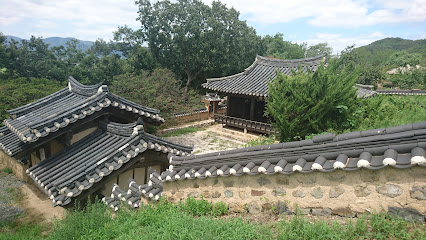
Daldongnae of Old Times
Discover the flavors of Korea at Daldongnae of Old Times – a culinary gem in Gyeongju-si showcasing traditional grilled dishes and warm hospitality.

Columnar Jointing Observation Deck
Discover the breathtaking geological beauty of the Columnar Jointing Observation Deck in Gyeongju-si, a must-visit natural wonder for every traveler.

Unmissable attractions to see
Cheomseongdae Observatory
Discover the ancient astronomical marvel of Cheomseongdae Observatory in Gyeongju, a historic site that reveals Korea's rich celestial heritage.

Donggung Palace & Wolji Pond
Discover the enchanting Donggung Palace & Wolji Pond in Gyeongju, a historical landmark blending royal heritage with serene beauty.

Bulguksa Temple
Explore the architectural beauty and spiritual tranquility of Bulguksa Temple, a UNESCO World Heritage site in Gyeongju, South Korea.

Gyeongju National Museum
Explore the Gyeongju National Museum: A treasure trove of Silla Kingdom artifacts revealing Korea's vibrant history and culture.
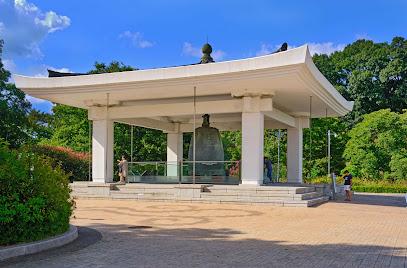
Gyeongju World
Experience the excitement of Gyeongju World, a captivating theme park blending thrilling rides with rich Korean cultural experiences in the heart of Gyeongju.

Woljeonggyo Bridge
Discover the enchanting Woljeonggyo Bridge in Gyeongju, a stunning blend of history, architecture, and natural beauty, perfect for leisurely walks and unforgettable photos.

Yeongildae Beach
Experience the natural beauty and vibrant atmosphere of Yeongildae Beach in Pohang, a perfect getaway for relaxation and adventure.

Seokguram Grotto
Explore Seokguram Grotto, a breathtaking Buddhist masterpiece and UNESCO World Heritage Site in Gyeongju, rich in history and spiritual significance.

Tongdosa Temple
Experience the tranquility and cultural richness of Tongdosa Temple, a historical Buddhist site in Gyeongsangnam-do, South Korea.

Taehwagang National Garden
Explore the natural beauty and tranquility of Taehwagang National Garden, a must-visit park in Ulsan, Korea, perfect for nature lovers and families.

Daewangam Park
Explore the tranquil beauty of Daewangam Park in Ulsan, where nature's splendor meets rich cultural history for an unforgettable experience.

Gyeongju Gyochon Traditional Village
Explore Gyeongju Gyochon Traditional Village, a serene retreat showcasing Korea's rich cultural heritage through traditional architecture, crafts, and delightful local cuisine.

Homigot Sunrise Square
Experience the breathtaking sunrises at Homigot Sunrise Square, where art meets nature in stunning Pohang-si, Gyeongsangbuk-do.

Jangsaengpo Whale Museum, Ulsan
Explore the Jangsaengpo Whale Museum in Ulsan, a captivating destination showcasing marine life and whale conservation efforts.

Jungang Market
Explore Jungang Market in Gyeongju for an unforgettable blend of local flavors, culture, and vibrant shopping experiences.

Essential places to dine
맷돌순두부
Experience authentic Korean flavors at 매돌순두부 in Gyeongju - home of delicious soft tofu dishes and warm hospitality.

Venzamas
Discover Venzamas: A premier brunch destination in Gyeongju offering delicious dishes made from fresh local ingredients.

Gyeongju Wonjo Kongguk
Discover authentic Korean flavors at Gyeongju Wonjo Kongguk, home of the delicious cold soybean soup and warm hospitality.

서민식당
Discover the essence of Korean barbecue at 서민식당 in Gyeongju-si—where every dish tells a story.

남정 부일기사식당
Experience authentic Korean flavors at 남정 부일기사식당 in Gyeongju-si – where tradition meets taste.

Gyodong Sssambap
Discover the delightful world of ssambap at Gyodong Sssambap, where traditional flavors meet modern dining in Gyeongju.

Dosol Maeul
Discover authentic Korean flavors at Dosol Maeul in Gyeongju-si - a culinary gem where tradition meets taste.

Hyanghwajeong
Experience the essence of Korea at Hyanghwajeong with delicious Ark shell bibimbap and a warm atmosphere in Gyeongju.

Hongsi Hanjeongsik
Discover the essence of Korean cuisine with a full-course meal at Hongsi Hanjeongsik in Gyeongju - where tradition meets flavor.

Seasoning
Experience delightful Western cuisine at Seasoning in Gyeongju - where local flavors meet culinary creativity.

요석궁 1779
Discover the essence of traditional Korean cuisine at 요석궁 1779, where exquisite flavors meet cultural heritage in Gyeongju.

Ryoko
Experience authentic Japanese cuisine at Ryoko in Gyeongju, where tradition meets modern culinary art.

Daegu Galbi
Discover authentic Korean barbecue at Daegu Galbi in Gyeongju-si - savor delicious grilled meats in a cozy atmosphere.

Soog
Experience authentic Korean flavors at Soog in Gyeongju—where tradition meets taste in every dish.

숙영식당
Experience authentic Korean cuisine at 숙영식당 in Gyeongju-si, where every dish tells a story of tradition and flavor.

Markets, malls and hidden boutiques
Moda Outlet
Moda Outlet in Gyeongju: A shopper's haven offering unbeatable deals and a vibrant shopping atmosphere.
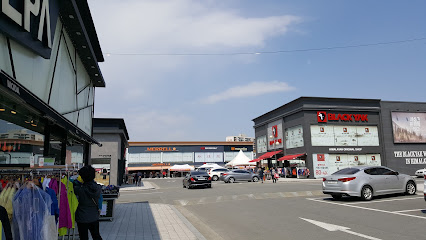
디스모먼트(thismoment)
Explore the enchanting souvenir store 디스모먼트 in Gyeongju, where local artistry meets unforgettable keepsakes, perfect for every traveler.

배리삼릉공원 경주기념품가게
Discover unique souvenirs and local crafts at 배리삼릉공원 경주기념품가게 in Gyeongju, the heart of Korean heritage.

깡통골목할매 유부전골
Explore 깡통골목할매 유부전골, a hidden gem in Gyeongju offering unique gifts and local crafts that embody the essence of Korean culture.

나그놀 황리단길
Explore 나그놀 황리단길, Gyeongju's vibrant shopping destination blending modern retail with rich local culture.

경주 실크로드
Explore 경주 실크로드, a charming gift shop in Gyeongju, offering unique Korean souvenirs that reflect the region's rich culture and history.
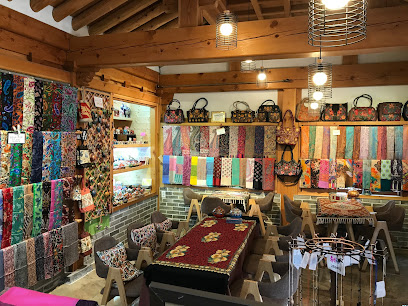
로빈스 콜랙션스
Explore the charm of Gyeongju at 로빈스 콜랙션스, a gift shop offering unique local crafts and souvenirs that capture the essence of your travels.

시카고 포스트
Explore 시카고 포스트: A charming gift shop in Gyeongju-si offering local crafts, souvenirs, and a taste of Korean culture.
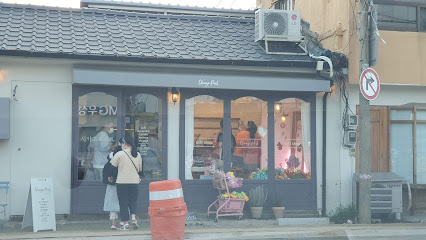
망고홈 Mango Home
Explore Mango Home, Gyeongju's charming gift shop featuring unique local crafts and souvenirs that capture the spirit of Korea.

Baerisamneung Gongwon 배리삼능 농원
Discover the charm of Gyeongju at Baerisamneung Gongwon, your go-to gift shop for unique souvenirs and local crafts.

Mimyohan
Explore Mimyohan in Gyeongju for unique gifts and authentic Korean craftsmanship, capturing the essence of South Korea's rich cultural heritage.

Gyeongju Persia Piercing
Discover Gyeongju Persia Piercing for exceptional body art and beauty services, blending tradition and modernity in a welcoming environment.

Ogo,studio
Explore the charm of Gyeongju-si at Ogo Studio, a gift shop brimming with unique handcrafted treasures and local artistry.

나이키 경북경주점 2
Discover the latest in athletic wear at Nike Gyeongju, where performance meets style in a vibrant city rich with history.

Dress Enjoy 입고놀자
Discover fashion in Gyeongju at Dress Enjoy, where modern trends meet traditional Korean aesthetics for an unforgettable shopping experience.

Essential bars & hidden hideouts
Bar분 (Bar Boon)
Experience the vibrant nightlife of Gyeongju at Bar Boon, where innovative cocktails meet local flavors in a cozy atmosphere.
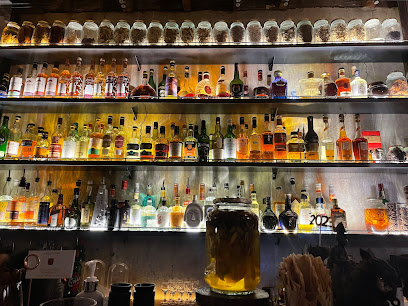
Heuheuheu
Discover the lively Heuheuheu bar in Gyeongju-si, a hotspot for craft beer lovers and food enthusiasts seeking a vibrant night out.

Gyeongju Cocktail Bar ELJEFE CUBANOS Pub
Experience the vibrant flavors of Cuba with exquisite cocktails and authentic cuisine at ELJEFE CUBANOS, Gyeongju's premier cocktail bar.

Round2 restaurant & pub
Discover the lively Round2 Restaurant & Pub in Gyeongju, where great food and drinks meet a vibrant social atmosphere.

Bar Prep
Discover the best cocktails in Gyeongju at Bar Prep, where every drink is crafted to perfection against the backdrop of ancient tombs.

New Orleans Lounge & Pub
Discover the lively spirit of Gyeongju at the New Orleans Lounge & Pub, a vibrant bar offering a unique blend of local flavors and entertainment.

Little Rock
Experience the vibrant nightlife and rich culture of Little Rock, Arkansas, a hidden gem for travelers seeking adventure and charm.

Eobuba
Discover Eobuba, Gyeongju's premier wine bar, offering an exquisite selection of wines in a cozy and inviting atmosphere.
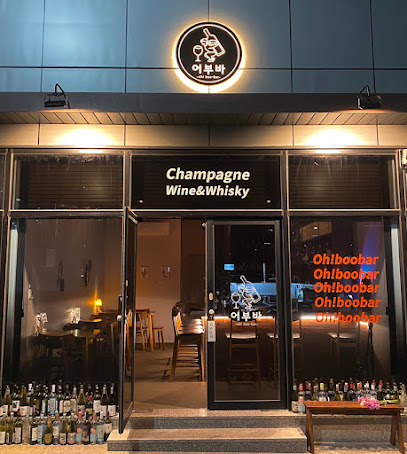
Showcase
Experience the vibrant nightlife of Gyeongju-si at Showcase, where great drinks meet friendly vibes in a cozy atmosphere.

Dehes
Discover Gyeongju's vibrant nightlife at Dehes, a bar where exceptional drinks and a lively atmosphere await every visitor.
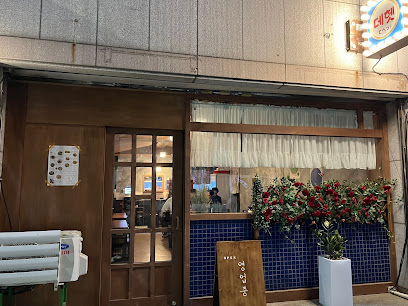
Le Jour J
Discover the essence of French cuisine at Le Jour J, Gyeongju's premier wine bar and restaurant, where every meal is a celebration of flavor.

Sweet Moon
Experience the charm of Sweet Moon, Gyeongju's wine bar offering a curated selection of wines and a welcoming atmosphere.

목로 (Mokro)
Discover Mokro: A lively bar in Gyeongju-si, where vibrant nightlife meets exquisite drinks and warm hospitality, perfect for unwinding after a day of exploration.

노워리즈(no worries)
Experience Gyeongju's vibrant nightlife at 노워리즈 (No Worries) Bar, where exceptional drinks and a welcoming atmosphere await.

The Backyard
Discover the lively nightlife at The Backyard, a must-visit bar in Gyeongju-si, South Korea, perfect for unwinding with refreshing drinks.

Local Phrases
-
- Hello안녕하세요
[annyeonghaseyo] - Goodbye안녕히 가세요
[annyeonghi gaseyo] - Yes네
[ne] - No아니요
[aniyo] - Please/You're welcome부탁합니다/천만에요
[butakhamnida/cheonmaneyo] - Thank you감사합니다
[gamsahamnida] - Excuse me/Sorry죄송합니다
[joesonghamnida] - How are you?어떻게 지내세요?
[eotteoke jinaeseyo?] - Fine. And you?잘 지내고 있어요. 그리고 당신은요?
[jal jinaego isseoyo. geurigo dangsineunyo?] - Do you speak English?영어 할 수 있어요?
[yeongeo hal su isseoyo?] - I don't understand이해하지 못했어요
[ihaehaji moshaesseoyo]
- Hello안녕하세요
-
- I'd like to see the menu, please메뉴를 보여주세요
[menyureul boyeojuseyo] - I don't eat meat고기를 먹지 않아요
[gogireul meokji anayo] - Cheers!건배!
[geonbae!] - I would like to pay, please계산할게요
[gyesanhalkkeyo]
- I'd like to see the menu, please메뉴를 보여주세요
-
- Help!도와주세요!
[dowajuseyo!] - Go away!가세요!
[gaseyo!] - Call the Police!경찰을 불러주세요!
[gyeongchareul bulleojuseyo!] - Call a doctor!의사를 불러주세요!
[uisareul bulleojuseyo!] - I'm lost길을 잃었어요
[gireul ilheosseoyo] - I'm ill아픈 건데요
[apeun geondeyo]
- Help!도와주세요!
-
- I'd like to buy...사고 싶어요...
[sago sipeoyo...] - I'm just looking둘러보고 있어요
[dulleobogo isseoyo] - How much is it?얼마에요?
[eolmaeyo?] - That's too expensive너무 비쌈
[neomu bissam] - Can you lower the price?가격을 내릴 수 있어요?
[gageoreul naeril su isseoyo?]
- I'd like to buy...사고 싶어요...
-
- What time is it?지금 몇 시에요?
[jigeum myeot sieyo?] - It's one o'clock한 시에요
[han sieyo] - Half past (10)10시 반
[yeol sie ban] - Morning아침
[achim] - Afternoon오후
[ohu] - Evening저녁
[jeonyeok] - Yesterday어제
[eoje] - Today오늘
[oneul] - Tomorrow내일
[naeil] - 1하나
[hana] - 2둘
[dul] - 3셋
[set] - 4넷
[net] - 5다섯
[daseot] - 6여섯
[yeoseot] - 7일곱
[ilgop] - 8여덟
[yeodeol] - 9아홉
[ahop] - 10열
[yeol]
- What time is it?지금 몇 시에요?
-
- Where's a/the...?...이 어디에요?
[...i eodieyo?] - What's the address?주소가 뭐에요?
[jusoga mwoeyo?] - Can you show me (on the map)?(지도에서) 보여주세요
[(jidoeseo) boyeojuseyo] - When's the next (bus)?다음 (버스)는 언제에요?
[daeum (beoseuneun) eonjeyo?] - A ticket (to ....)표 (....으로)
[pyo (....euro)]
- Where's a/the...?...이 어디에요?
History of Gyeongju
-
Gyeongju, originally known as Seorabeol, was the capital of the Silla Kingdom, which was founded in 57 BCE. The kingdom lasted nearly a millennium and played a crucial role in unifying the Korean Peninsula.
-
In 668 CE, under the leadership of King Munmu and General Kim Yu-shin, the Silla Kingdom unified the Three Kingdoms of Korea—Goguryeo, Baekje, and Silla itself. This unification led to a period of prosperity and cultural flourishing in Gyeongju.
-
Built in 774 CE during the Silla period, Bulguksa Temple is a UNESCO World Heritage site. The temple complex is renowned for its architectural splendor and spiritual significance, featuring iconic structures like Dabotap and Seokgatap pagodas.
-
Constructed in the 8th century, Seokguram Grotto is an artificial cave temple and another UNESCO World Heritage site. It houses a stunning statue of the Seated Buddha, considered one of the finest examples of Buddhist art in the world.
-
After the fall of the Silla Kingdom in 935 CE, Gyeongju remained a significant city during the Goryeo Dynasty. Although it was no longer the capital, it continued to be an important cultural and religious center.
-
Dating back to the 7th century, Cheomseongdae is the oldest existing astronomical observatory in East Asia. This stone structure was used for observing the stars to aid in agricultural planning and astrological rituals.
-
The Daereungwon Tomb Complex, often referred to as Tumuli Park, contains large burial mounds of Silla royalty and nobility. Excavations have revealed a wealth of artifacts, providing valuable insights into the life and culture of ancient Gyeongju.
-
During the Joseon Dynasty (1392-1897), Gyeongju continued to thrive as a provincial city. Despite losing its political significance, it maintained its cultural and historical importance, preserving many of its ancient sites and traditions.
-
In contemporary times, Gyeongju has transformed into a vibrant city that balances its rich historical heritage with modern development. It remains a key tourist destination, attracting visitors from around the world to its numerous historical and cultural landmarks.
Gyeongju Essentials
-
Gyeongju is located in the southeastern part of South Korea. The nearest international airport is Gimhae International Airport in Busan, approximately 80 kilometers away. From Busan, you can take a KTX (Korea Train Express) high-speed train to Singyeongju Station, which takes about 30 minutes. Alternatively, you can take an intercity bus from major cities like Seoul, Busan, or Daegu directly to Gyeongju. The journey from Seoul to Gyeongju by bus or KTX takes around 2.5 to 3 hours.
-
Gyeongju has a well-developed public transportation system including buses and taxis. The city is relatively small, and many attractions are within walking distance of each other. For longer distances, local buses are a convenient option, and taxis are readily available. Renting a bicycle is also a popular way to explore the city, especially around the historical sites. Car rentals are available, but parking can be challenging in busy areas.
-
The official currency in South Korea is the South Korean Won (KRW). Credit cards are widely accepted in hotels, restaurants, and shops in Gyeongju. However, it is advisable to carry some cash for smaller establishments, street vendors, and transportation. ATMs are plentiful, and most accept international cards, but be aware that some may charge a withdrawal fee.
-
Gyeongju is generally a safe city for tourists. Violent crime is rare, but petty crimes such as pickpocketing can occur, especially in crowded areas. Always stay vigilant and keep an eye on your belongings. Avoid poorly lit areas at night. There are no specific high-crime areas targeting tourists, but it is always best to stay cautious and aware of your surroundings.
-
In case of emergency, dial 112 for police assistance or 119 for fire and medical emergencies. English-speaking operators may be available. Gyeongju has several hospitals and clinics that provide medical services. It is highly recommended to have travel insurance that covers medical emergencies. Pharmacies are available for minor health issues and over-the-counter medications.
-
Fashion: Do dress modestly, especially when visiting religious sites. Avoid overly revealing clothing. Religion: Do respect local customs and traditions. Always remove your shoes when entering temples and cover your head if required. Public Transport: Do be respectful and give up your seat to elderly passengers, pregnant women, and people with disabilities. Don't eat or drink on public transport. Greetings: Do greet people with a slight bow or a handshake. Using two hands to give and receive items is considered polite. Eating & Drinking: Do try local delicacies and accept food offerings graciously. Don’t stick chopsticks upright in a bowl of rice, as it resembles a funeral ritual.
-
To experience Gyeongju like a local, visit the local markets such as Gyeongju Jungang Market where you can buy fresh produce and traditional Korean goods. Engage with locals, as they are friendly and often willing to share stories about the city’s history and culture. Don’t miss visiting the UNESCO World Heritage Sites like Bulguksa Temple and Seokguram Grotto. For a unique experience, take a bike ride around Bomun Lake or visit Donggung Palace and Wolji Pond at night when it is beautifully illuminated.
Trending Landmark in Gyeongju
-
Cheomseongdae Observatory
-
Donggung Palace & Wolji Pond
-
Bulguksa Temple
-
Gyeongju National Museum
-
Gyeongju World
-
Woljeonggyo Bridge
-
Seokguram Grotto
-
Hwangnidan-gil
-
Gyeongju Gyochon Traditional Village
-
Jungang Market
-
Cheonmachong
-
Daereungwon Tomb Complex
-
Yangdong Folk Village
-
Daldongnae of Old Times
-
Columnar Jointing Observation Deck
Nearby Cities to Gyeongju
-
Things To Do in Pohang
-
Things To Do in Ulsan
-
Things To Do in Daegu
-
Things To Do in Busan
-
Things To Do in Andong
-
Things To Do in Daejeon
-
Things To Do in Jeonju
-
Things To Do in Suncheon
-
Things To Do in Gwangju
-
Things To Do in Suwon
-
Things To Do in Chuncheon
-
Things To Do in Fukuoka
-
Things To Do in Seoul
-
Things To Do in Mokpo
-
Things To Do in Incheon















